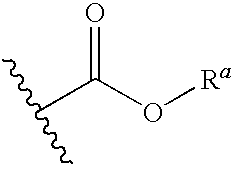Hcv inhibitors
a technology of hcv and inhibitors, which is applied in the field of compounds useful as antiviral agents, can solve the problems of hcv genotype, inability to develop a vaccine in the near future, and inability to meet the needs of patients,
- Summary
- Abstract
- Description
- Claims
- Application Information
AI Technical Summary
Problems solved by technology
Method used
Image
Examples
example 1
6-Chloro-2,3,4,9-tetrahydro-1H-carbazol-1-one
[0133]
[0134]a) Cyclohexane-1,2-dione (4-chlorophenyl)hydrazone. To a cold (0° C.) solution of 4-chloroaniline (5.6 g, 44 mmol) in concentrated hydrochloric acid (5 mL) was added sodium nitrite (3.0 g, 44 mmol) dissolved in water (10 mL) portionwise over 20 minutes. The mixture was stirred at 0° C. for 30 minutes. In a separate flask, a cool solution of 2-(hydroxymethylene)cyclohexanone (Organic Syntheses, Collective Volume 4, 1963, pg. 536, incorporated herein by reference with regard to such synthesis) (5.0 g, 40 mmol) in methanol (30 mL) was treated with a solution of sodium acetate (8.3 g, 101 mmol) in water (25 mL). The mixture was stirred at 0° C. for 20 minutes and the diazonium salt slurry was added. The combined mixture was stirred for 10-15 minutes, collected by filtration, triturated with ethanol, and collected by filtration to give cyclohexane-1,2-dione (4-chlorophenyl)hydrazone (4.6 g, 49% yield) as a yellow solid. 1H-NMR (DMS...
example 2
6-Chloro-2,3,4,9-tetrahydro-1H-carbazol-1-amine
[0136]
[0137]To a solution of to 6-chloro-2,3,4,9-tetrahydro-1H-carbazol-1-one (500 mg, 2.3 mmol) and ammonium acetate (1.8 g, 23 mmol) in methanol (9 mL) was added sodium cyanoborohydride (720 mg, 11.5 mmol). After heating at 60° C. for 15 hours, the mixture was cooled and treated with concentrated hydrochloric acid until pH=1. The organics were removed under reduced pressure and the resulting precipitate was collected by filtration, dissolved in ethyl acetate and methanol, and washed with saturated aqueous sodium carbonate. The phases were separated and the organic phase was concentrated to yield 6-chloro-2,3,4,9-tetrahydro-1H-carbazol-1-amine (260 mg, 52% yield) as a light brown solid. 1H-NMR (DMSO-d6): δ 10.90 (s, 1H), 7.34 (m, 1H), 7.27 (d, 1H), 6.97 (dd, 1H), 3.90 (t, 1H), 2.54 (m, 2H), 2.04-1.89 (m, 2H), 1.66 (m, 1H), 1.50 (m, 1H); MS m / z 221 (M+1).
example 3
6-Bromo-2,3,4,9-tetrahydro-1H-carbazol-1-one
[0138]
[0139]6-Bromo-2,3,4,9-tetrahydro-1H-carbazol-1-one was prepared from bromoaniline and 2-(hydroxymethylene)cyclohexanone in a similar manner as described above to give a brown solid. 1H-NMR (CDCl3): δ 8.79 (s, 1H), 7.80 (s, 1H), 7.44 (d, 1H), 7.30 (d, 1H), 2.97 (t, 2H), 2.66 (t, 2H), 2.27 (m, 2H); MS m / z 263, 265 (M+1).
PUM
 Login to View More
Login to View More Abstract
Description
Claims
Application Information
 Login to View More
Login to View More - R&D
- Intellectual Property
- Life Sciences
- Materials
- Tech Scout
- Unparalleled Data Quality
- Higher Quality Content
- 60% Fewer Hallucinations
Browse by: Latest US Patents, China's latest patents, Technical Efficacy Thesaurus, Application Domain, Technology Topic, Popular Technical Reports.
© 2025 PatSnap. All rights reserved.Legal|Privacy policy|Modern Slavery Act Transparency Statement|Sitemap|About US| Contact US: help@patsnap.com



